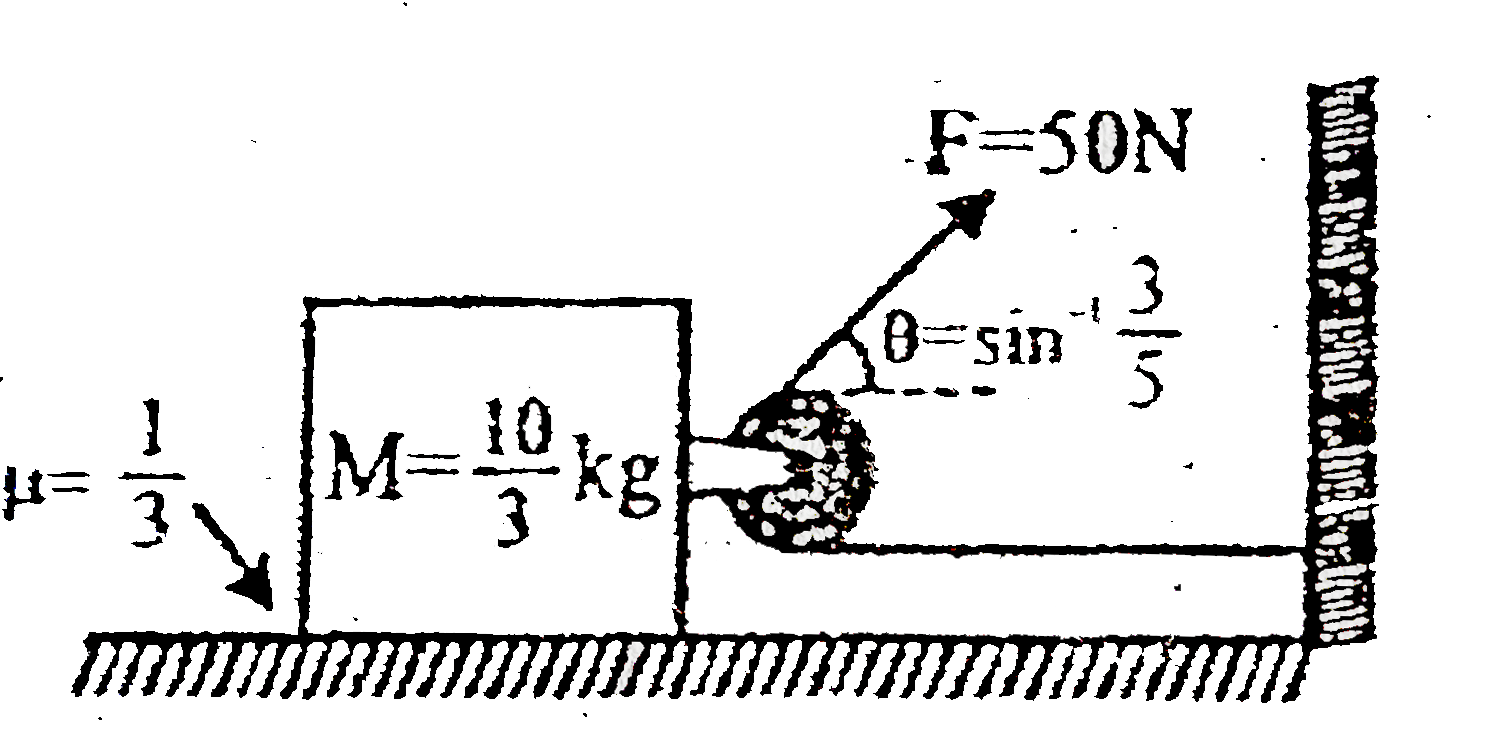A person in an elevator accelerating upwards with an acceleration of , tosses a coin vertically upwards with a speed of . After how much time will the coin fall back into his hand ? (g = 10 )
The correct Answer is:C
To solve the problem of when the coin will fall back into the person's hand in an upward-accelerating elevator, we can follow these steps:
Step 1: Identify the variables
- Initial velocity of the coin, u=20m/s
- Acceleration of the elevator, a=2m/s2
- Acceleration due to gravity, g=10m/s2
Step 2: Determine the effective acceleration
Since the elevator is accelerating upwards, the effective acceleration acting on the coin (which is thrown upwards) will be the acceleration due to gravity minus the acceleration of the elevator. Thus, we have:
a′=−g+a=−10+2=−12m/s2
Step 3: Use the kinematic equation
We will use the kinematic equation to find the time taken for the coin to reach its highest point (where its velocity becomes zero):
v=u+a′t
At the highest point, the final velocity v=0. Substituting the values:
0=20+(−12)t
Step 4: Solve for time t
Rearranging the equation gives:
12t=20⟹t=2012=53s
This time t is the time taken to reach the highest point.
Step 5: Calculate the total time
Since the time taken to ascend is equal to the time taken to descend, the total time T for the coin to fall back into the person's hand is:
T=t+t=2t=2×53=103s
Step 6: Final answer
Thus, the total time taken for the coin to fall back into the person's hand is:
T=103s≈3.33s
- Initial velocity of the coin, u=20m/s
- Acceleration of the elevator, a=2m/s2
- Acceleration due to gravity, g=10m/s2
Since the elevator is accelerating upwards, the effective acceleration acting on the coin (which is thrown upwards) will be the acceleration due to gravity minus the acceleration of the elevator. Thus, we have:
We will use the kinematic equation to find the time taken for the coin to reach its highest point (where its velocity becomes zero):
Rearranging the equation gives:
Since the time taken to ascend is equal to the time taken to descend, the total time T for the coin to fall back into the person's hand is:
Thus, the total time taken for the coin to fall back into the person's hand is:
Topper's Solved these Questions
- LAWS OF MOTIONBOOK - NCERT FINGERTPS ENGLISHCHAPTER - LAWS OF MOTIONEXERCISE - HOTS
8 Videos
- LAWS OF MOTIONBOOK - NCERT FINGERTPS ENGLISHCHAPTER - LAWS OF MOTIONEXERCISE - Exemplar Problems
9 Videos
- KINETIC THEORYBOOK - NCERT FINGERTPS ENGLISHCHAPTER - KINETIC THEORYEXERCISE - Assertion And Reason
10 Videos
- MECHANICAL PROPERTIES OF FLUIDSBOOK - NCERT FINGERTPS ENGLISHCHAPTER - MECHANICAL PROPERTIES OF FLUIDSEXERCISE - NCERT Exemplar
5 Videos
Similar Questions
A pebble is thrown vertically upwards with a speed of 20 m s−1. How high will it be after 2 s? (Take g = 10 m s−2)
View SolutionFrom a lift moving upwards with a uniform acceleration a = 2ms–2, a man throws a ball vertically upwards. with a velocity v = 12ms−1 releative to lift the ball comes back to the man after a time t find. t
View SolutionIn a given figure the acceleration of M is (g=10ms−2)

View SolutionA scooter starts from rest have an acceleration of 1ms−2 while a car 150 m behind it starts from rest with an acceleration of 2ms−2. After how much time the car catches up with the scooter ?
View SolutionA body is projected at an angle of 30∘ with the horizontal and with a speed of 30ms−1. What is the angle with the horizontal after 1.5s ? (g=10ms−2).
View SolutionA ball is thrown vertically upwards from the ground with a speed of 25.2ms−1. How long does it take to reach its highest point and how high does it rise ? (Take g=9.8ms−2)
View SolutionAn object Is vertically projected with an initial velocity of 20ms−1.Calculate the distance travelled by the object in 3 seconds.(g=10ms−2)
View SolutionAn elevator weighing 6000 kg is pulled upward by a cable with an acceleration of 5ms−2 . Taking g to be 10ms−2 , then the tension in the cable is
View SolutionA person in lift which ascents up with acceleration 10ms−2 drops a stone from a height 10 m. The time of decent is [g=10ms−2]
View SolutionA man of mass 60 kg climbed down using an elevator . The elevator had an acceleration of 4ms−2 . If the acceleration due to gravity is 10ms−2 , the man's apparent weight on his way down is
View Solution
